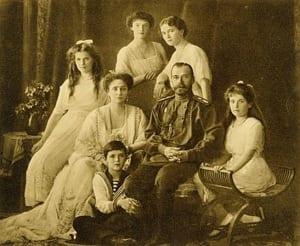
Empress Alexandra Feodorovna and Prince Alexei, 1911.
Editor’s note: June 4, 2024, This post has been updated.
From the Habsburgs of Austria to the Romanovs of Russia, the quest for maintaining “pure” bloodlines has often haunted royal dynasties throughout history. The princes of early 20th-century Europe were no exception.
The source of their wealth and power — the royal blood coursing through their veins — could also sentence them to an early death.
Blood Disorder
A mutation that spontaneously arose in the DNA of Britain’s Queen Victoria doomed many of her male descendants to the bleeding disorder known as hemophilia. The mutation is known to have been on one of her X chromosomes, but because it didn’t last beyond the fourth generation, scientists have never been able to tell which type of hemophilia plagued the princes of Europe.
Now researchers studying the remains of the Romanovs, the Russian royals killed at the start of the Bolshevik revolution, appear to have finally identified the “royal disease.”
The Romanovs
Empress Alexandra, wife of Emperor Nicholas and granddaughter of Queen Victoria, is known to have been a carrier for the royal hemophilia mutation because her son, Crown Prince Alexei, was afflicted with the disease.
By analyzing the X chromosome DNA in Alexandra’s remains, Evgeny Rogaev and colleagues uncovered a tiny, single-base DNA change in the gene that encodes factor IX, an essential blood-clotting protein.
This result, published online today in Science Express, indicates that the royal families of Europe suffered from hemophilia B. This form of the disease is about seven times less common than classic hemophilia (also called hemophilia A), which is caused by mutations in the gene that encodes another clotting protein, factor VIII.
Alexi’s DNA
As expected, when the researchers looked at Alexei’s DNA, they found that his X chromosome contained the factor IX mutation. DNA from remains presumed to be from Grand Duchess Anastasia also showed evidence of this factor IX mutation, meaning that, like her mother, she was a carrier for hemophilia. Had this young girl really escaped execution, as was rumored for many years, any sons she had would have each had a 50% chance of continuing on the tradition of the royal disease.
Image: Permission of the State Archives of the Russian Federation




